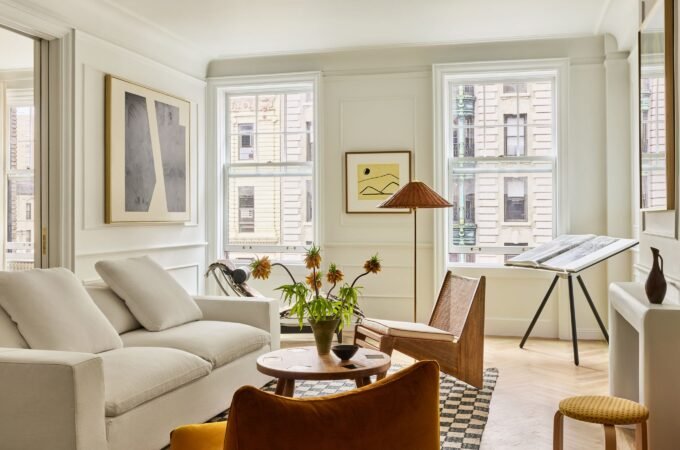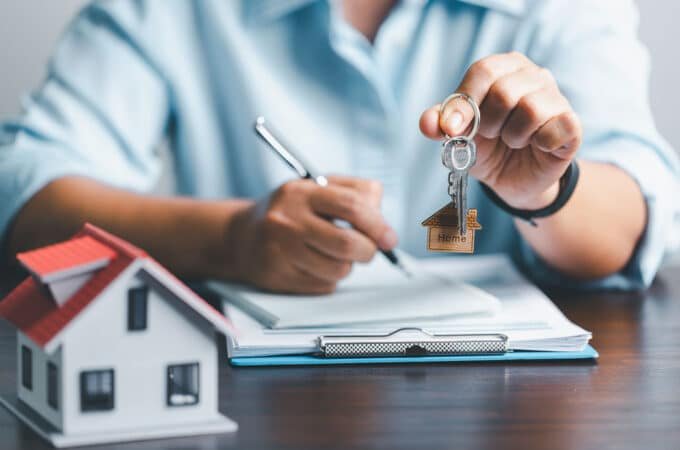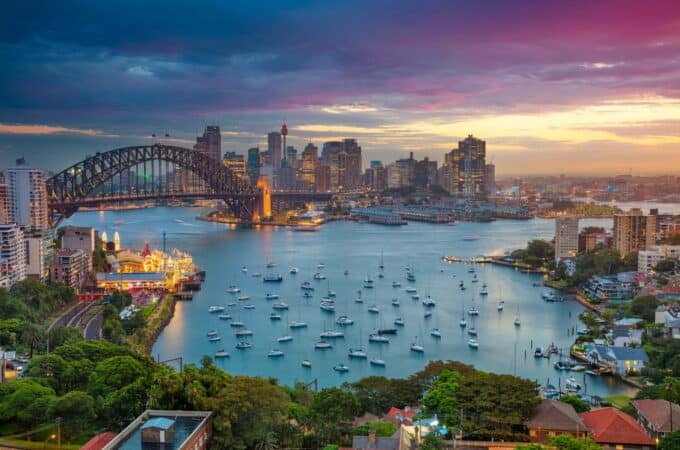
Effective Home Staging Tips for a Quick Sale: Boost Your Property’s Appeal
Our article on effective home staging tips provides expert advice and strategies to help you optimize the appeal of your home for a speedy sale. From enhancing curb appeal to decluttering and depersonalizing the space, we cover essential steps to make your home more attractive to potential buyers. The article also includes guidance on creating a cohesive design, utilizing neutral colors, adding accessories, and even leveraging virtual staging techniques. By following these tips, you can increase your chances of selling your home quickly and at a desirable price.
Table of Contents
ToggleEnhancing Property Appeal: The Process
When it comes to selling a property quickly and at a desirable price, enhancing its appeal through effective home staging is crucial. The process of enhancing the property’s appeal involves transforming it into an inviting, attractive, and welcoming space that potential buyers can envision themselves living in. This includes decluttering, deep cleaning, depersonalizing the space, and strategically arranging furniture and decor to highlight the property’s best features. By following these steps, you can create a visually appealing environment that will captivate potential buyers and increase your chances of a quick sale.
Imagine you’re trying to sell your house. Potential buyers walk through the door and are greeted by a cluttered entryway full of personal belongings and outdated furniture. It becomes challenging for them to see past the mess and envision their dream home in that space. However, if you invest time and effort into enhancing your property’s appeal through staging, you can transform that cluttered entryway into an inviting foyer with tasteful decorations and neutral furnishings, instantly capturing the attention and imagination of potential buyers.
Now that we understand the importance of enhancing property appeal through staging, let’s explore the key benefits it offers in achieving quick sales.
Key Benefits on Quick Sales
- Higher Sales Price: Staged homes tend to attract more attention from potential buyers, leading to increased competition. This heightened interest often translates into higher offers and ultimately results in a higher sales price for your property.
- Faster Selling Time: When you stage your home effectively, it creates an emotional connection with potential buyers and helps them visualize themselves living in the space. This emotional appeal can expedite the selling process as buyers are more likely to make quicker decisions when they feel connected to a property.
- Wider Buyer Pool: By presenting your home in its best light through staging, you broaden your buyer pool. A staged property appeals to a wider range of potential buyers who may have different tastes and preferences. This increases the likelihood of attracting more interested parties and finding the right buyer quickly.
- Maximized Online Presence: In today’s digital age, the majority of homebuyers begin their search online. Staging your property ensures that the listing photos look appealing and professional, capturing the attention of potential buyers browsing through numerous online listings. This can lead to more inquiries, showings, and ultimately quick offers.
- Stand Out from Competition: Effective home staging allows your property to stand out in a competitive market. With well-curated interiors, attention-grabbing details, and an overall inviting atmosphere, your home becomes memorable and distinguishes itself from other listings. A standout property is more likely to attract serious buyers and secure a quick sale.
With these key benefits in mind, let’s explore the financial aspect of staging by comparing it with renovation costs.
- A survey from the National Association of Realtors in 2019 found that around 40% of buyers’ agents believed that home staging positively impacts how a buyer perceives a property, potentially expediting sales.
- According to The Mortgage Reports, staged homes spend 73% less time on the market compared to non-staged homes, indicating staging’s effectiveness in speeding up sales.
- Research by the Real Estate Staging Association states that professionally staged properties sold 87% faster and for over 17% higher prices than un-staged homes underlining the utility of professional staging guidance for quick sales.
- Staging your home in 2023 can have several significant advantages, including a higher sales price, faster selling time, a wider buyer pool, maximized online presence, and the ability to stand out from the competition. By presenting your home in its best light through staging, you can attract more attention from potential buyers, leading to increased competition and ultimately resulting in a higher sales price. Additionally, effective staging creates an emotional connection with buyers, helping them visualize themselves living in the space, which can expedite the selling process. Staging also broadens your buyer pool by appealing to a wider range of potential buyers with different tastes and preferences. In today’s digital age, staging ensures that your listing photos look appealing and professional, capturing the attention of potential buyers browsing online. This can lead to more inquiries, showings, and quick offers. Lastly, staging allows your property to stand out in a competitive market by creating a memorable and inviting atmosphere. With these benefits in mind, it is clear that staging is a valuable investment for homeowners looking to sell their properties quickly and at a higher price.
Staging Versus Renovation Costs
When it comes to selling a property, homeowners often find themselves grappling with the decision of whether to invest in staging or renovation. While both can enhance a property’s appeal, it’s essential to weigh the costs and benefits. Staging involves strategically arranging furniture and decor to showcase the home’s potential, while renovation entails making structural changes or updates.
For instance, let’s say you have a dated kitchen that could benefit from a renovation. However, if the cost of remodeling exceeds your budget or the return on investment is uncertain, opting for staging might be a wiser choice. A well-staged kitchen could still attract buyers without the hefty price tag of a renovation.
Remember, the goal is to make your property appealing without overspending. Assess the condition of your home, prioritize areas that need attention, and consider which approach would provide the most significant impact within your budget constraints.
Organizing and Decluttering Your Space
One of the fundamental aspects of effective home staging is organizing and decluttering your space. Clearing out excess items allows potential buyers to envision themselves living in the home by creating an open and inviting atmosphere.
Start by tackling one room at a time, sorting through belongings and deciding what to keep, donate, or discard. Remove any personal items such as photographs or memorabilia that may distract buyers from visualizing their future in the space.
Pro tip: Decluttering is not just about aesthetics; it also helps create a sense of spaciousness, making rooms appear larger and more appealing.
Once you’ve pared down your belongings, organize what remains in a practical and visually pleasing manner. Arrange furniture in a way that highlights the functionality and flow of each room. Consider rearranging pieces or removing unnecessary furniture to create an open and inviting layout.
In addition to furniture arrangement, pay attention to storage spaces. Buyers often prioritize ample storage when looking for a new home. Maximize the potential of closets and cabinets by organizing them thoughtfully and removing any excess items. This showcases the storage options available and prevents potential buyers from being overwhelmed by cluttered spaces.
Marie, a homeowner preparing to sell her house, decided to declutter and organize her space. She focused on one room at a time, tackling her bedroom first. By removing extra furniture, storing away personal items, and organizing her closet, she created a serene and spacious environment that buyers could envision themselves enjoying.
By investing time and effort in organizing and decluttering, you can greatly impact the overall appeal of your property. Remember to consider the flow of each space, showcase ample storage options, and create an inviting atmosphere for potential buyers.
Targeted Depersonalization Strategy
When it comes to showcasing your home’s potential to potential buyers, it’s vital to create a neutral and inviting environment. This is where a targeted depersonalization strategy comes into play. Depersonalization refers to the process of removing personal items and decor that reflect the homeowners’ unique tastes and preferences. The idea is to allow potential buyers to envision themselves living in the space by creating a blank canvas.
Start by decluttering and removing any excessive personal items such as family photos, personalized artwork, or collections that can distract buyers from seeing the true potential of the home. Pack away these items and store them safely until you move into your new place.
Next, strive for a clean aesthetic by conducting thorough cleaning sessions, including washing windows, steam cleaning carpets, and ensuring all surfaces sparkle. A well-maintained and clutter-free environment helps create a positive first impression.
Additionally, consider repainting walls in neutral tones like whites, creams, or light grays. This not only enhances the feeling of space but also allows buyers to envision their preferred color schemes and furniture arrangements.
Lastly, don’t forget about addressing any lingering odors. Pet smells, cooking aromas, or tobacco smoke can be off-putting for potential buyers. Utilize air fresheners or scented candles sparingly while aiming for a fresh and welcoming atmosphere.
By employing a targeted depersonalization strategy, you’re helping potential buyers see past your own personal style and envision the possibilities for themselves within the space.
Cohesive Interior Design Techniques
A well-thought-out interior design can significantly impact how potential buyers perceive a property. To maximize your chances of a quick sale, consider implementing cohesive interior design techniques throughout your home.
First and foremost, aim for a harmonious flow from one room to another. This means ensuring that there is consistency in terms of color palette, furniture styles, and overall theme. When each space feels connected, it creates a sense of unity that buyers will appreciate.
For example, if you have an open-concept living and dining area, choose complementary colors for both spaces to create a seamless transition. Use similar furniture styles or materials to enhance the connection between the two areas.
In addition to color consistency, pay attention to furniture placement. Arrange your furniture in a way that maximizes space and allows for easy traffic flow throughout the home. Consider creating specific vignettes or focal points in each room to draw buyers’ attention and highlight the unique features of the space.
Lighting is another key element that can make a significant difference in how a room feels. Ensure that each area is properly lit, whether through natural light or well-placed artificial lighting fixtures. A well-lit space opens up the room and creates a welcoming ambiance.
Finally, don’t neglect the power of accessories and finishing touches. Thoughtfully curated artwork, strategically placed mirrors, and tasteful decorative elements can elevate the overall aesthetic and make a lasting impression on potential buyers.
By implementing cohesive interior design techniques, you create an environment that is visually appealing, functional, and allows buyers to envision themselves living in the space. With these tips in mind, you’re well on your way to boosting your property’s appeal and increasing your chances of a quick sale.
Creating an Inviting Color Scheme
When it comes to staging your home for a quick sale, one of the most effective techniques is creating an inviting color scheme. Colors have a significant impact on people’s emotions and can greatly influence their perception of a space. The goal is to choose colors that evoke positive feelings and create a welcoming atmosphere for potential buyers. Consider neutral tones like soft beige, light gray, or warm taupe for the walls as they provide a clean canvas that allows buyers to envision their own style in the space. Pairing these neutral colors with pops of vibrant hues through accessories and artwork can add interest and create visual appeal.
Now that you’ve set the tone indoors, it’s time to shift our focus and explore strategies to boost your property’s curb appeal.
Exterior Boost: Curb Appeal Strategies
First impressions matter, especially when it comes to selling your home. Enhancing your property’s curb appeal can significantly increase its attractiveness to potential buyers. Here are some effective strategies to consider:
- Focus on landscaping: A well-maintained and visually appealing landscape is essential for creating an inviting exterior. Consider adding natural borders using hedges, bamboo, or ornamental grasses to define your property while adding a touch of greenery. Native landscaping with plants adapted to the local climate not only adds allure but also attracts wildlife.
- Highlight architectural details: Mixing textures like stone, wood, metal, and brick on exterior facades can accentuate architectural details and make your home stand out. You can achieve this by incorporating different materials in the design of your pathways or choosing distinct finishes for the front door and window frames.
- Pay attention to lighting: Thoughtfully placed outdoor lighting fixtures can create a warm and inviting ambiance during evening showings. Consider installing copper fixtures like lanterns or unique lighting options that complement your home’s style while illuminating key areas such as entryways, pathways, and the front yard seating area.
- Make it welcoming: Creating a seating area in the front yard, even if it’s small, can maximize space and encourage engagement with neighbors. Add comfortable outdoor furniture, cushions, and maybe even a colorful throw to make the area cozy and inviting.
- Optimize your entryway: An inviting entryway can leave a lasting impression on potential buyers. Consider adding pops of color by painting your front door with bold choices that complement the overall color scheme of your home. Intriguing lighting fixtures or a statement address plaque can also add an interesting touch.
By implementing these curb appeal strategies, you can elevate the overall attractiveness of your property and entice potential buyers from the moment they lay eyes on your home.
Originally from the U.S, Rana Tarakji is an SEO Analyst, the founder of One SEO, a multinational link building company, and the author of “Off-site SEO Guide: A Hands-on SEO Tutorial for Beginners & Dummies”, and a web content specialist who now lives in Beirut, Lebanon. Rana’s work has been published in many print and online magazines and newspapers, such as Entrepreneur, Life Hacker, Upwork, Christian Today, and many more.






